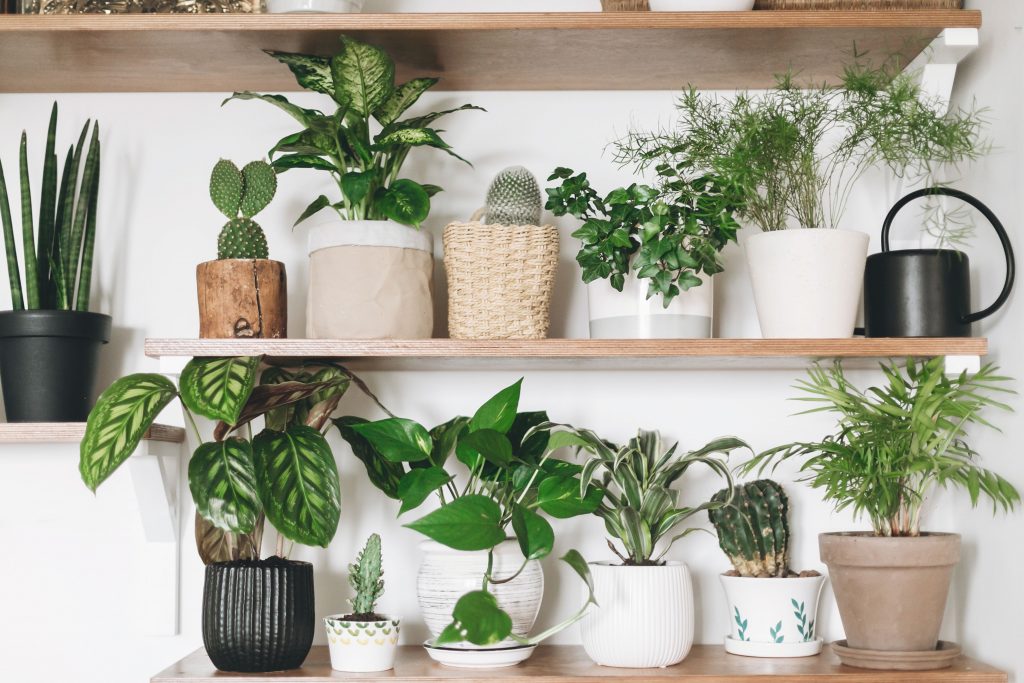Zero Waste, Zero Waste Lifestyle
Top 9 Best Indoor Plants To Keep You & Your Family Healthy
Indoor plants have become increasingly popular over the last few years, and for good reason. Not only are they pretty, but they have a whole host of health benefits.
Nothing adds more beauty and comfort to our homes and offices than the lush flowers and foliage of indoor plants. Bedrooms, bathrooms, kitchens, cubicles… There really isn’t a space a houseplant can’t enliven. Just add light and water, and you’ve got a growing indoor oasis. Bringing plants into your home is aesthetically pleasing and – amazingly – plants can offer strong health benefits as well!
Table of Contents
I. 5 Healthy Benefits Of Indoor Plants
1. Purify the air
Scientific support for phytoremediation — that’s the word for plants scrubbing contaminants from the air — usually begins with a NASA study conducted in the 1980s.
NASA studies have shown that houseplants remove harmful indoor pollutants such as carbon monoxide, formaldehyde, ammonia, pollen, mold, and more – nasty things that are known to cause headaches, fatigue, sickness, and allergies. Plants release water vapor into the air, which increases humidity, and this can help improve respiratory and skin health by offsetting the drying effects of heating systems.
Recent findings suggest that you’d have to shelter a large number of plants to equal the air purifying efficiency of modern biofilters and other technologies. Adding some indoor plants to your apartment can improve the air quality, and cleaner air can lead to better health.
2. Boost your productivity
In fact, studies have found that when people were allowed to have indoor plants in their office space, their work performance improved! One frequently cited study from 1996 found that students in a campus computer lab worked 12 percent faster and were less stressed when plants were placed nearby.
No wonder so many new tech offices are including indoor spaces reminiscent of forests and tropical oases. Not only are they beautiful, they also help people feel better and work better.
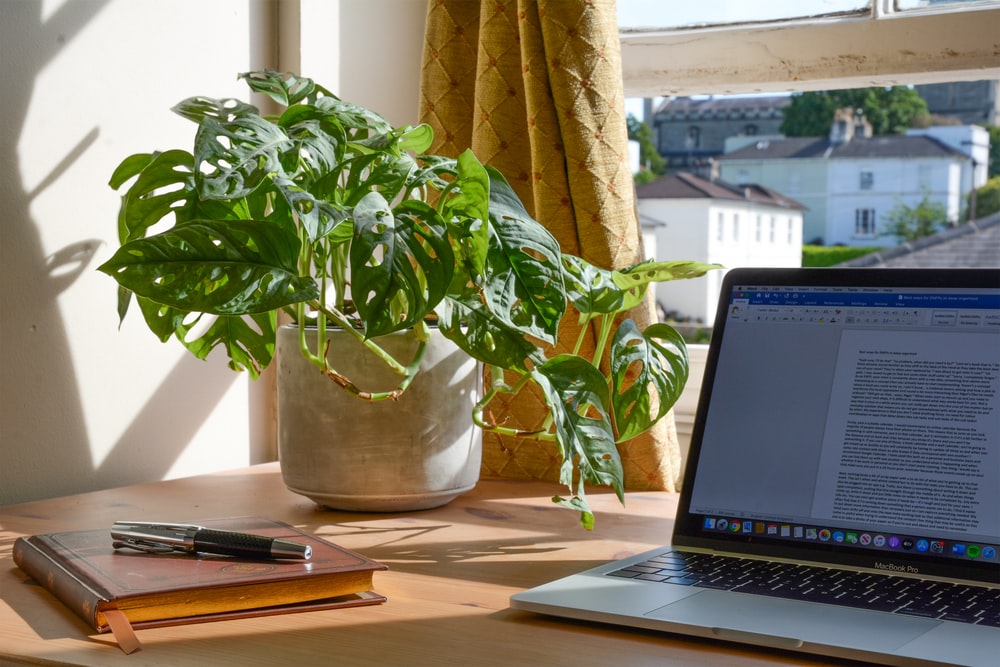
3. Improve your mood
Humans have a strong connection to nature and bringing nature into your immediate surroundings makes you calmer, more content, and as we’ve seen, more focused. Outdoor activities like forest bathing and nature walks are shown to improve levels of stress and anxiety, and living with indoor plants can do the same.
There are studies going on now that are testing to see whether having plants nearby in a hospital room can actually help patients better manage their pain.
Just having plants around you will obviously offer psychological benefits but the act of caring for your plants can also help decrease stress and anxiety. So next time you’re watering your plants, slow down, take a few deep breaths, and really focus on what you’re doing.
4. Plants may help you recover from illness faster
Being able to look at plants and flowers may speed your recovery from an illness, injury, or surgery.
A 2002 review of the research revealed that people recuperating from several kinds of surgery needed less pain medication and had shorter hospital stays than people who weren’t looking at greenery during their recovery periods.
It’s important to note that most research focuses on plants and natural scenery in hospital settings rather than at home.
5. A great way to decorate seasonally
Indoor plants, including potted plants and cut flowers, is the easiest and best way to update your decor for every season. In the summer, you can plant tropical leaves and peonies. In the fall, pine cones, pumpkins and dahlias reign supreme. In the winter, pine branches and poinsettias set the mood. And in the spring, tulips and cherry blossoms mark the turn of the season!
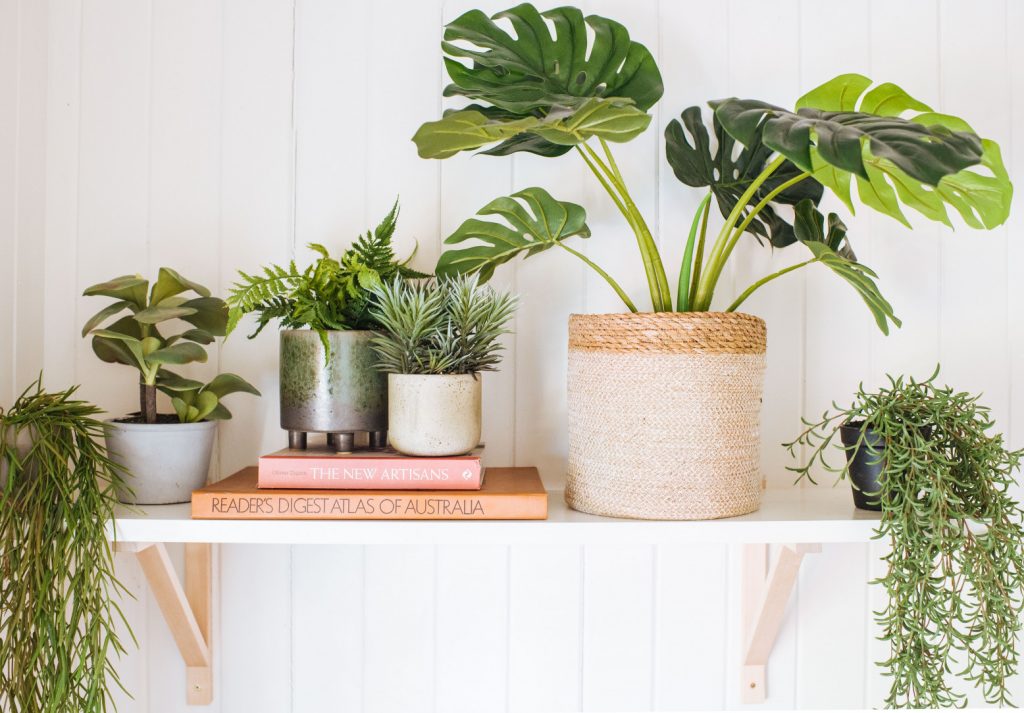
II. 9 Indoor Plants Help You Have A Better Life
There are a few things that can take your home to the next level and prove you’re a real adult: a bookshelf, a bar cart, and perhaps most of all, an indoor plant. But let’s be real—most people aren’t plant experts and have no idea where to start (admitting it is the first step). Add these indoor plants to your home, and you’ll start experiencing all the healthy benefits ASAP.
They can survive almost anything, we promise!
1. Snake Plant
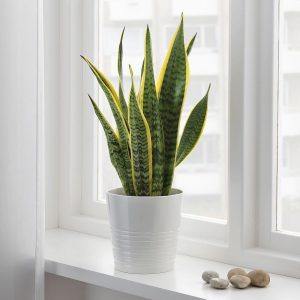
Besides looking cool, they’re low-maintenance indoor plants that’s known for surviving droughts, making it perfect for newbies living in almost any environment.
Though in small contributions, snake plants can absorb cancer-causing pollutants, including CO2, benzene, formaldehyde, xylene, and toluene. With the ability to absorb and remove harmful toxins, snake plants can act as an effective defense against airborne allergies, so you can breathe easy having this in your home.
This improves air-quality and will help you breathe easier while you sleep. Also, like its succulent friend aloe, it’s easy to care for.
2. ZZ Plant
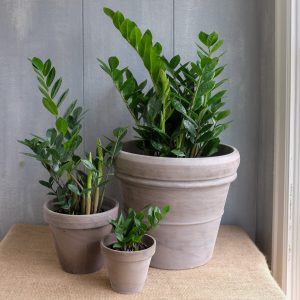
A ZZ Plant is a spectacular choice for any low-light environment. They are extremely dry-tolerant and low maintenance.
You might notice the ZZ has large potato-like rhizomes (a.k.a. horizontal stems that continuously grow) under the surface of its surrounding potting mix.
In addition, the plant meaning of ZZ is prosperity and friendship, making it a great gift for the plant lover (or future plant parent) in your life.
3. Monstera Deliciosa
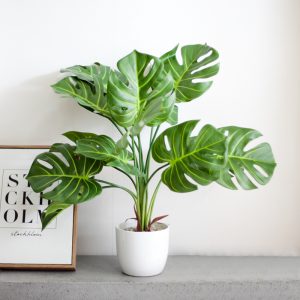
Best part: You only need to water a monstera deliciosa every one to two weeks, letting the soil dry out between waterings, per The Sill. Plus, these indoor plants arr perfect if your place doesn’t get direct sunlight—all it needs is a spot that receives bright to medium indirect light.
In general, large-leafed philodendron plants, including the monstera deliciosa, were shown to be one of the most effective at reducing air pollutants, like benzene, trichloroethylene, and formaldehyde, according to a NASA study.
4. Philodendron
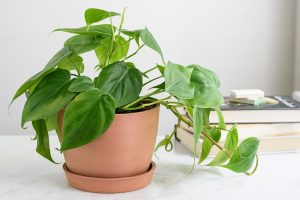
In the right indoor conditions, the Philodendron’s heart-shaped leaves and trailing vines can trail to over 10 feet long, making it the perfect plant for a high shelf.
Did we mention it has a reputation of being one of the easiest indoor plants to grow? Philodendrons have been shown to filter formaldehyde.
5. Dracaena
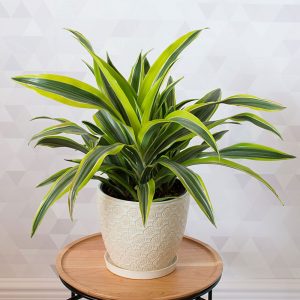
If you live a high-maintenance life—always on the go, out at all hours—you need an easy going, low-maintenance plant, like the Dracaena. The dracaena plant is a popular ornamental houseplant, grown both indoors and outdoors in subtropical climates. Not only does its dramatic foliage with beautiful color patterns make a great focal point in any room, but dracaena can also help improve air quality.
When it comes to purifying the air, though, the Dracaena Marginata Plant is your best bet. It removes benzene, formaldehyde, trichloroethylene, and xylene.
6. Spider Plant
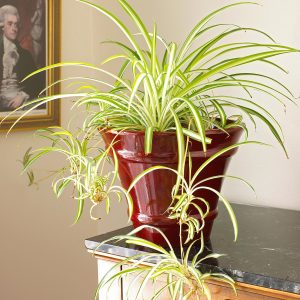
These are great low maintenance plants, which need watering from the bottom perhaps once a week and a misting every now and then. They sprout babies regularly, off the end of their leaves, that are easy to propagate; you will be inundated with baby plants, which you can then share with friends and family.
One of the easiest indoor plants to maintain, the Spider Plant produces oxygen whilst purifying the air in your home and office by absorbing carbon monoxide, formaldehyde and xylene. Additionally, Spider Plants are non-toxic and are in fact edible, making them safe for pets and young children.
7. Aloe Vera
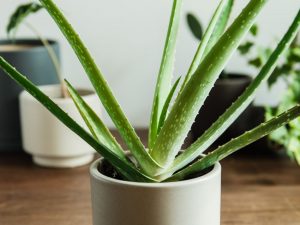
This plant isn’t just easy to care for, it’s also known as a healer. Aloe vera juice has anti-inflammatory and anti-bacterial properties. So not only can you use these indoor plants to brighten up your home, but you can also use it to heal wounds and different skin conditions.
Put your aloe vera plant in a bright, sunny spot and don’t worry about keeping it alive. And even if you don’t use aloe vera for its healing properties, you can still reap all its air-purification benefits as it removes formaldehyde.
8. Bird’s Nest Fern
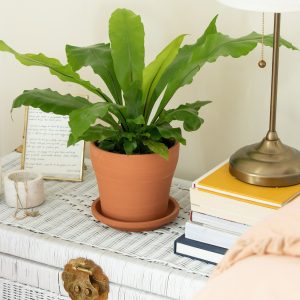
Having a bird’s nest fern in your home is an instant conversation starter, thanks to its bright green, ripple-edged fronds. You’ll score major cool points with this signature-looking indoor plants, especially if you put it in a hanging planter, as Marino recommends. Because the bird’s nest fern thrives in medium indirect light and a humid environment, it would do great in a bathroom with a shower, as long as there are windows that receive natural light.
Ferns have been shown to filter formaldehyde, xylene, and toluene, so it’s not a bad idea to put one in your bathroom. After all, that’s where you’re likely to use household toxins, like harsh cleaners, hairspray, and nail polish remover that often contain these chemicals.
9. Peace Lilies
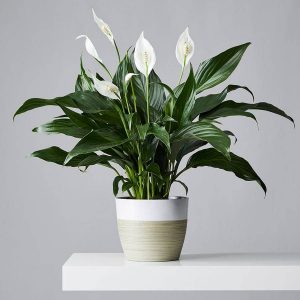
If you already have experience keeping indoor plants alive (congrats), then it might be time to add a peace lily into the mix. The peace lily’s flowers have pollen, so this plant might not be the best choice for people who struggle with allergies. These gorgeous indoor plants improve the flow of energy in the home as it neutralizes harmful indoor chemicals. It’s also believed to help people flourish mentally, physically, and spiritually.
If you’re into astrology, you’ll appreciate that peace lilies have a delicate and gentle appearance but are extremely strong and deep-rooted, akin to the energy exuded by people born under the Cancer zodiac sign.
———————————————————————-
The mission of Zero Waste Initiative is reduce the use of disposable plastic products, provide people with safe, convenient, eco-friendly, recyclable and zero waste products, trying our best to save our planet
Together we can make a difference!
Would you like to join with us?

